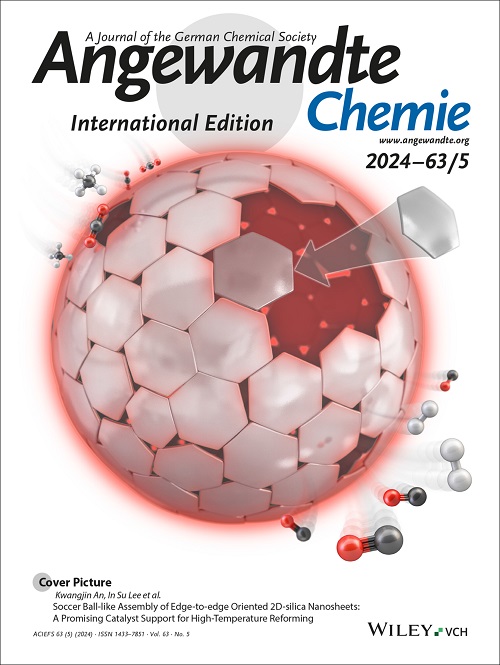Stabilizing Cu3+ Active Center by Intramolecular Electron Transfer for Boosting Complete Glucose Electrooxidation
IF 16.9
1区 化学
Q1 CHEMISTRY, MULTIDISCIPLINARY
引用次数: 0
Abstract
The development of effective electrocatalysts for glucose (Glu) electro‐conversion is highly desirable for sensing applications; however, is greatly plagued by unstable catalytic active centers during the catalytic process, leading to severe inactivation of active sites and incomplete Glu electrooxidation. Herein, we report a class of single‐atom Pt‐doped Cu‐based metal‐organic frameworks (MOFs) with stable high‐valence Cu sites (CuO‐MOF‐Pt通过分子内电子转移稳定Cu3+活性中心促进葡萄糖完全电氧化
开发有效的葡萄糖(Glu)电转化电催化剂是传感应用的迫切需要;然而,在催化过程中受到催化活性中心不稳定的严重困扰,导致活性位点严重失活,导致Glu电氧化不完全。在此,我们报道了一类具有稳定高价位(CuO‐MOF‐Pt1)的单原子掺杂铜基金属有机骨架(MOF),实现了Glu的完全氧化和对Glu的毫安电流响应。我们发现MOF和Pt的-CN作为电子吸出位点,诱导Cu位点的电子转移,促进稳定Cu3+活性中心的电化学生成。利用操作还原光谱和计算,我们发现在CuO‐MOF‐Pt1上连续的C─C键断裂可以实现完全的葡萄糖电氧化反应(GOR),并且稳定的Cu3+活性中心是其令人瞩目的GOR活性的原因。值得注意的是,CuO‐MOF‐Pt1具有相当的Glu传感性能,具有2.587 mA mM−1 cm−2的高灵敏度,0.93µM的低检测限和非凡的耐用性。我们进一步构建了一个基于CuO - MOF - Pt1的小型化传感器,能够准确检测唾液中的Glu。这项工作为通过电子结构调节来促进Glu电氧化的稳定金属活性中心的精确设计开辟了一条鼓舞人心的途径。
本文章由计算机程序翻译,如有差异,请以英文原文为准。
求助全文
约1分钟内获得全文
求助全文
来源期刊
CiteScore
26.60
自引率
6.60%
发文量
3549
审稿时长
1.5 months
期刊介绍:
Angewandte Chemie, a journal of the German Chemical Society (GDCh), maintains a leading position among scholarly journals in general chemistry with an impressive Impact Factor of 16.6 (2022 Journal Citation Reports, Clarivate, 2023). Published weekly in a reader-friendly format, it features new articles almost every day. Established in 1887, Angewandte Chemie is a prominent chemistry journal, offering a dynamic blend of Review-type articles, Highlights, Communications, and Research Articles on a weekly basis, making it unique in the field.

 求助内容:
求助内容: 应助结果提醒方式:
应助结果提醒方式:


